Preparing for the Singularity: The Future of Human-AI Collaboration
AI and the Future Workforce
Preparing for the Singularity: The Future of Human-AI
 What is the Singularity?
What is the Singularity?
As technology advances at an exponential rate, the term “the Singularity” is increasingly used to describe a hypothetical moment when artificial intelligence (AI) surpasses human intelligence, triggering rapid and unpredictable changes to society. Many experts believe the Singularity will redefine what it means to be human, bringing profound implications for every aspect of our lives.
The Singularity: A Tipping Point in Human and AI Evolution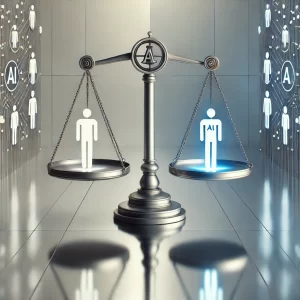
At its core, the Singularity represents a tipping point where AI evolves from performing specific, narrow tasks to possessing a level of intelligence equal to, or even surpassing, that of human beings. This moment—widely speculated by experts like Ray Kurzweil in The Singularity is Nearer to potentially occur within the next few decades—marks a profound shift from AI functioning merely as a tool to becoming a partner in human evolution.
Autonomous Learning and Self-Improvement
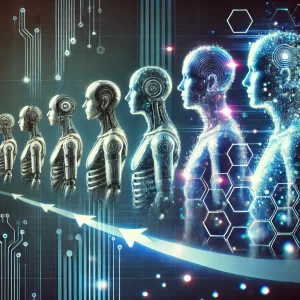 Kurzweil envisions that this threshold will unlock an era where AI can autonomously learn, self-improve, and make complex decisions without human guidance. This transformation signals a departure from traditional technological revolutions, which primarily reshaped industries or work methods, toward a shift capable of altering the fundamental human experience itself.
Kurzweil envisions that this threshold will unlock an era where AI can autonomously learn, self-improve, and make complex decisions without human guidance. This transformation signals a departure from traditional technological revolutions, which primarily reshaped industries or work methods, toward a shift capable of altering the fundamental human experience itself.
Blurring Boundaries: Human and Artificial Intelligence as Near-Equals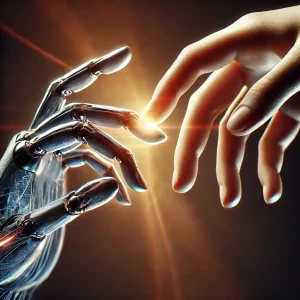
In Kurzweil’s view, the Singularity will blur the boundaries between biological and artificial intelligence, leading to profound implications for identity, consciousness, and humanity’s role in the world. His predictions resonate with insights from Jeff Hawkins in A Thousand Brains, where Hawkins suggests that advanced AI may develop a form of cognition uniquely different from human thought.
Consciousness and Moral Implications
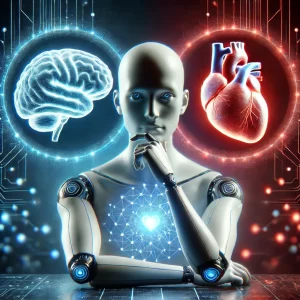 Adding depth to this vision, Annaka Harris’s reflections on consciousness propose challenging questions about whether an AI with self-awareness could hold moral status comparable to humans. As we approach the potential reality of conscious AI, we must prepare for a world where machines not only support but might also help guide human progress—raising ethical, social, and philosophical considerations that extend beyond today’s AI capabilities.
Adding depth to this vision, Annaka Harris’s reflections on consciousness propose challenging questions about whether an AI with self-awareness could hold moral status comparable to humans. As we approach the potential reality of conscious AI, we must prepare for a world where machines not only support but might also help guide human progress—raising ethical, social, and philosophical considerations that extend beyond today’s AI capabilities.
Preparing for a Future Beyond Our Control
This convergence of thought from Kurzweil, Hawkins, and Harris sets the stage for the ethical, social, and practical implications of a world where humans and AI collaborate as near-equals, or even where AI assumes a guiding role in human destiny. Preparing for the Singularity means understanding not only the technological advances on the horizon but also the existential questions we will inevitably face as AI capabilities evolve.
The Implications of the Singularity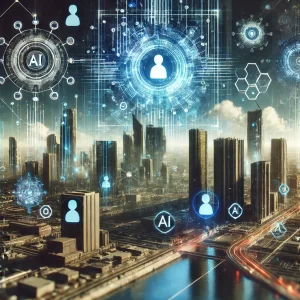
•Unpredictable Evolution: Once AI becomes self-improving, its development may accelerate in ways beyond human comprehension, leading to unforeseen advancements.
•Ethical Questions: The Singularity brings ethical challenges, including decisions about AI’s rights, safety protocols, and autonomy.
•Reimagining Society: If super-intelligent AI handles everything from mundane tasks to complex problem-solving, traditional roles and societal structures may transform entirely.
In this context, the Singularity isn’t just a futuristic scenario but a transformative event that demands urgent preparation and consideration. As we approach this moment, the question isn’t just if the Singularity will happen but when and how we can adapt to its consequences.
From Narrow AI to General AI
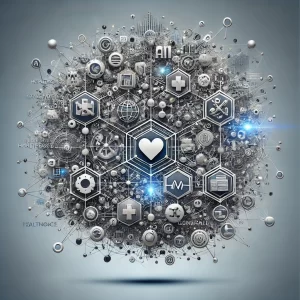 To understand the Singularity, it’s essential to distinguish between Narrow AI and General AI. Currently, most AI systems we interact with are Narrow AI—programs that are incredibly good at specific tasks like playing chess, analyzing medical images, or driving vehicles. However, these systems lack the ability to transfer knowledge from one task to another, meaning they can’t understand or perform beyond their programmed scope.
To understand the Singularity, it’s essential to distinguish between Narrow AI and General AI. Currently, most AI systems we interact with are Narrow AI—programs that are incredibly good at specific tasks like playing chess, analyzing medical images, or driving vehicles. However, these systems lack the ability to transfer knowledge from one task to another, meaning they can’t understand or perform beyond their programmed scope.
General AI (also known as Artificial General Intelligence, or AGI), however, would have the capacity to learn and apply intelligence across a broad range of tasks, much like humans do. AGI would understand context, infer meaning, and creatively solve complex problems that span different domains. While Narrow AI operates under strict rules, General AI would function autonomously and could innovate, respond emotionally, or even self-improve.
Why General AI Could Be Game-Changing
•Self-Improvement: General AI could refine its algorithms autonomously, evolving beyond its initial programming and advancing faster than human control might allow.
•Increased Adaptability: Unlike Narrow AI, General AI could apply knowledge across different domains, enhancing efficiency and versatility in real-world applications.
•Potential for Sentience: General AI might possess qualities akin to human consciousness, which raises profound questions about rights, morality, and coexistence.
With recent developments in AI, such as the deployment of AI agents—software designed to autonomously interact with users and systems—we’re witnessing the early steps toward AGI. Agents like OpenAI’s ChatGPT and emerging technologies from companies like DeepMind are demonstrating a level of interaction and learning that brings us closer to realizing AGI. As these agents become more intelligent and capable of handling complex tasks, we edge closer to a world where AI could fundamentally alter human roles in society.
Human-AI Synergy: The Future of Collaboration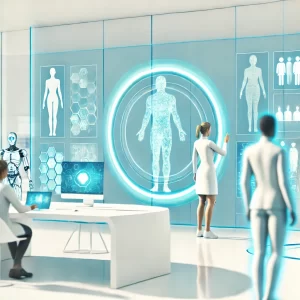
The Singularity, and the rise of General AI, brings with it the possibility of unprecedented human-AI synergy. This synergy is likely to reshape every industry, from healthcare and law to education and creative arts. Instead of AI replacing human intelligence, it could become a collaborative partner, augmenting our abilities and enabling us to tackle problems previously deemed unsolvable.
Impact on Human Occupations: How General AI Could Transform Key Professions
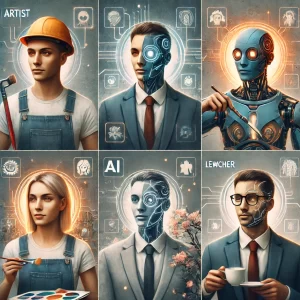 As we approach the development of General AI (AGI), its effects will ripple across a wide range of occupations. AGI’s capacity for autonomous learning, adaptability, and potential sentience will redefine roles traditionally reserved for humans, affecting everything from technical work to creative and interpersonal professions. Here’s how AGI could reshape specific roles and what it might mean for professionals in these fields.
As we approach the development of General AI (AGI), its effects will ripple across a wide range of occupations. AGI’s capacity for autonomous learning, adaptability, and potential sentience will redefine roles traditionally reserved for humans, affecting everything from technical work to creative and interpersonal professions. Here’s how AGI could reshape specific roles and what it might mean for professionals in these fields.
1. Graphic Artists: Redefining Creativity in a Digital Age
With AGI’s ability to analyze artistic styles, generate unique visuals, and even respond to emotional cues, the role of a graphic artist could undergo significant changes. Currently, tools like DALL-E and Midjourney showcase the potential of AI in generating visual art, but AGI could go further by understanding client briefs with greater nuance, creating contextually relevant designs, and iterating on feedback autonomously.
While this may streamline the creative process and reduce the need for manual labor in design, it could also mean that graphic artists shift toward roles that focus more on conceptualization, creative direction, and crafting highly customized art that embodies a human touch AI might still lack.
2. Mechanics: Automated Diagnostics and Repair
In the realm of mechanical work, AGI could revolutionize diagnostics and repair processes. Imagine AGI-powered systems capable of understanding the intricacies of automotive or industrial machinery, identifying faults in real-time, and performing repairs with robotic precision. Self-diagnosing vehicles are already emerging, but AGI would bring this to a new level by not only detecting issues but also predicting potential failures and autonomously fixing complex mechanical problems.
For mechanics, this could mean fewer manual diagnostic tasks and more emphasis on overseeing AGI-powered systems, ensuring they’re functioning optimally, and handling specialized repairs where a human touch is needed.
3. Attorneys: AI-Enhanced Legal Research and Decision Support
AGI’s impact on law could be transformative. With its ability to process vast legal databases, analyze case law, and draw nuanced conclusions, AGI could handle tasks like legal research, contract review, and case analysis at speeds and accuracies that surpass human capabilities. Moreover, AGI could offer strategic insights by analyzing historical case outcomes and predicting trial results based on prior legal precedents.
Attorneys might find their roles shifting from exhaustive research and document preparation to high-level client interactions, negotiation, and case strategy. AGI would support them as a powerful legal assistant, handling the data-heavy elements of the profession and allowing lawyers to focus on decision-making and personal advocacy.
4. Teachers: Personalized Education through AI
AGI’s capacity for understanding individual learning styles, tracking progress, and adjusting teaching methods on the fly could reshape education. Instead of the traditional one-size-fits-all model, AGI could deliver tailored educational experiences, identifying gaps in student knowledge, recommending resources, and even providing one-on-one tutoring in real-time.
Teachers might transition from traditional lecturing to guiding, mentoring, and developing curricula that focus on soft skills, critical thinking, and creativity—skills that AGI may find challenging to replicate authentically. Rather than replacing teachers, AGI could enable a model where educators can focus on emotional and social development, creating a more holistic learning environment.
5. Customer Service Representatives: Personalized Assistance at Scale
Customer service has already seen considerable automation, but AGI would bring an even more personalized experience, with AI agents that understand human emotions, predict needs, and engage in meaningful, context-driven conversations. Imagine a scenario where an AI customer service agent remembers past interactions with a customer, can interpret nuanced queries, and respond with empathy.
While AGI might replace basic customer service roles, representatives could focus on handling complex, emotionally sensitive cases or managing escalations. This evolution would likely lead to fewer entry-level customer service jobs but create demand for specialized roles focused on maintaining positive customer relationships and high-level service strategies.
6. Healthcare Providers: Diagnostic Precision and Enhanced Patient Care
AGI could analyze patient data, predict health risks, and even offer treatment recommendations based on global health data and research, potentially with higher accuracy than human practitioners. In fields like radiology, diagnostics, and personalized medicine, AGI could revolutionize how healthcare providers deliver care by identifying disease markers earlier and tailoring treatments to individual genetic profiles.
Doctors and nurses would still play essential roles, focusing on patient interaction, treatment planning, and empathy-driven care. AGI could allow healthcare professionals to spend more time on direct patient care and the human elements of healing, while AI assists with diagnostics and data interpretation.
Balancing Human and AI Roles
The examples above illustrate a future where AGI enhances roles rather than fully replaces them, allowing professionals to focus on the uniquely human aspects of their work. This synergy between humans and AI could enable industries to be more efficient, creative, and responsive, as humans concentrate on decision-making, ethical considerations, and emotional intelligence, while AGI manages repetitive, data-intensive tasks.
Preparing for these transformations requires a proactive approach—developing skills that complement AGI capabilities, like critical thinking, adaptability, and creativity. By embracing this evolution, we can cultivate a collaborative future where human ingenuity and AGI’s power coalesce to redefine what’s possible in the modern workforce.
The Advent of AI Agents and Worldcoin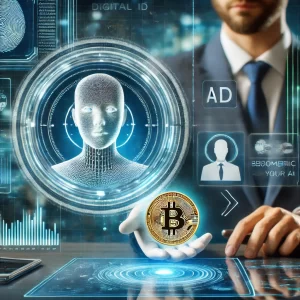
As we explore the possibilities of AI-human collaboration, the role of AI agents becomes increasingly relevant. These digital representatives can handle everything from customer service to high-level data analysis, reducing the workload for human counterparts. As these agents become more autonomous, they could one day manage complex tasks or even interact with other AI agents, paving the way for a more efficient and interconnected world.
Worldcoin is another fascinating development in the AI landscape. Founded by OpenAI’s Sam Altman, Worldcoin aims to create a universal digital identity for people, using biometric data to ensure individual privacy and authenticity. This universal ID could serve as a basis for interacting with AI systems in a secure and personalized way. Imagine a future where Worldcoin IDs allow AI agents to personalize services based on your preferences, securely access your data, and ensure safe transactions. As we move closer to AGI, Worldcoin could serve as a bridge between human identity and AI systems, ensuring privacy and enhancing the effectiveness of human-AI interactions.
A New Social Contract: Preparing for Coexistence with AI
 To make the Singularity a positive turning point, society needs a proactive approach to the ethical, social, and economic implications of General AI. A new social contract could guide our interaction with AI, setting boundaries and establishing rights and responsibilities for humans and AI entities alike.
To make the Singularity a positive turning point, society needs a proactive approach to the ethical, social, and economic implications of General AI. A new social contract could guide our interaction with AI, setting boundaries and establishing rights and responsibilities for humans and AI entities alike.
Principles for an Ethical AI Future
1.Transparency and Accountability: We must ensure that AI systems are designed with transparency and are held accountable for their decisions.
2.Rights and Fairness: If AI systems approach sentience, we must address the ethical questions surrounding their rights and societal roles. Treating AI as mere tools could become morally questionable.
3.Lifelong Learning and Adaptability: As AI systems evolve, human adaptability will be essential. This means providing continuous education, focusing on critical thinking and emotional intelligence.
4.Collaborative Ethics: With AI playing a role in decision-making processes, humans and machines must develop collaborative ethics. For example, AI systems could provide data-driven insights, while humans ensure that moral considerations are upheld.
As we continue to push the boundaries of AI, it’s vital that we establish clear policies to protect human rights and dignity. We must also consider whether AI should have its own set of rights and protections, particularly if it reaches a level of consciousness or sentience.
Building on Our Journey: Key Insights from Previous Blogs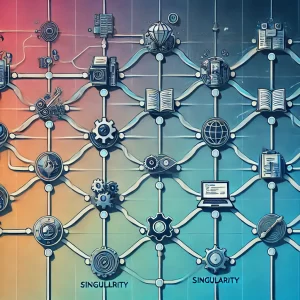
As we delve into the topic of the Singularity and the potential of General AI, it’s essential to reflect on insights from earlier posts in this series. Each blog has been part of a larger journey, guiding us through the transformative impact of AI, robotics, and automation on the future of work. Here’s how previous discussions lay the groundwork for understanding the profound implications of human-AI collaboration:
•“The Dawn of Automation: A Historical Perspective” set the stage by examining the historical context of automation, showing how previous technological revolutions transformed industries. Understanding the parallels between past automation and the unprecedented advancements we’re seeing today offers valuable insights into how the Singularity could reshape our world.
•“Mapping the Workforce of Tomorrow” explored how various sectors are being affected by automation, revealing which jobs are most at risk and which are adapting to technological change. As we face the potential of General AI, these insights are critical in understanding the industries that will be most impacted and the need for forward-thinking, adaptable skills.
•“The Automation Scenarios: Predicting the Impact” looked at different rates of AI and automation adoption, predicting how industries could change under rapid, moderate, or slow adoption scenarios. Revisiting these scenarios helps us envision how quickly the Singularity could influence our lives, depending on societal and corporate choices around AI adoption.
•“The Socioeconomic Impact of Workforce Displacement” addressed how automation might deepen income inequality and regional disparities. As we move toward the Singularity, these socioeconomic concerns become even more pressing, with the potential for AI to alter the very fabric of society if proactive measures aren’t taken.
•“Occupational Shifts: Who Will Need to Change?” examined specific job categories most at risk due to automation and AI. With the rise of General AI, nearly every industry could see significant changes, making it vital for workers to prepare for new forms of collaboration and skill adaptation.
Each of these previous discussions contributes to a more comprehensive view of how we, as individuals and society, can prepare for a future shaped by advanced AI. For a deeper dive into each of these topics, revisit these blogs and consider how the themes explored connect with the concept of the Singularity and the evolving role of AI in our lives.
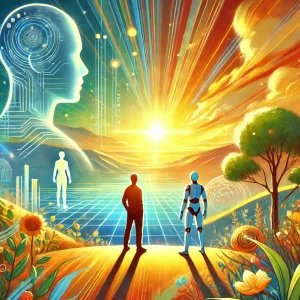 Conclusion: Embracing the Future with Caution and Optimism
Conclusion: Embracing the Future with Caution and Optimism
The Singularity and the advent of General AI represent both incredible potential and profound ethical challenges. The arrival of AI agents and projects like Worldcoin signals a future where humans and AI can interact in seamless, secure, and personalized ways, setting the stage for human-AI collaboration at an unprecedented scale.
As we approach this turning point, the key to success lies in preparing ourselves—intellectually, ethically, and practically—for a world where human and AI intelligence coexist and collaborate. By fostering transparency, accountability, and mutual respect, we can embrace the Singularity not as a disruption but as a natural progression in human evolution.
Secure Your Financial Future: Join the Movement of Forward-Thinking Entrepreneurs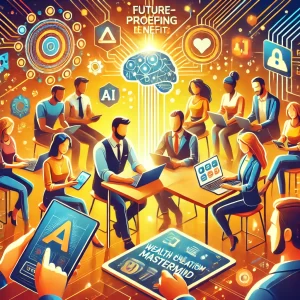
As we stand on the brink of a future shaped by AI, automation, and the singularity, the most powerful step you can take is to be proactive in preparing for these changes. Imagine building a financial fortress that’s resilient, adaptable, and capable of thriving in an evolving landscape. This is the future-proof approach that the Wealth Creation Mastermind champions through its resources, training, and community.
By joining our private Facebook group, Digital Marketing Secrets for Network Marketing Success, you’ll gain access to:
•Exclusive Insights: Stay informed about the latest trends in AI, automation, and digital marketing strategies designed for long-term success.
•Community of Visionaries: Connect with like-minded entrepreneurs who are navigating the new era with purpose, ambition, and a shared commitment to financial freedom.
•Access to Our Online Course: Learn practical, digital-driven strategies that will enable you to leverage AI tools effectively in your business.
•Blueprint for Resilience: Equip yourself with the tools, knowledge, and support to create a scalable, future-proof income stream.
Take control of your financial destiny, be part of an innovative community, and turn this age of transformation into your era of opportunity. Click here to us now, stay ahead of the curve, and let’s build a future where you lead with confidence..
#AI #Singularity #FutureOfWork #HumanAICollaboration #Automation #DigitalMarketing #NetworkMarketing #WealthCreation #AIAgents #FutureReady #Entrepreneurship #FinancialFortress #AIRevolution

John Rogers is a former Wall Street portfolio manager and served as CEO of Premium Enterprises and President of The Colorado Tire Recycling Center. He transitioned to digital marketing, founding WealthCreationMastermind.com to empower home-based entrepreneurs with cutting-edge strategies. Creator of the “Mastering the Art of Wealth Creation” online course, John has driven significant growth in network marketing, achieving the Blue Diamond rank and earning the title of Univera Associate of the Year in 2015. His expertise in leveraging technology for financial success transforms how entrepreneurs achieve their business goals.